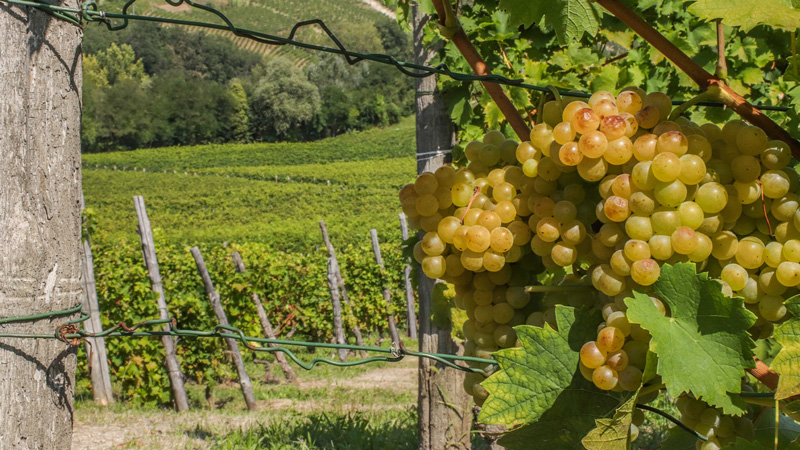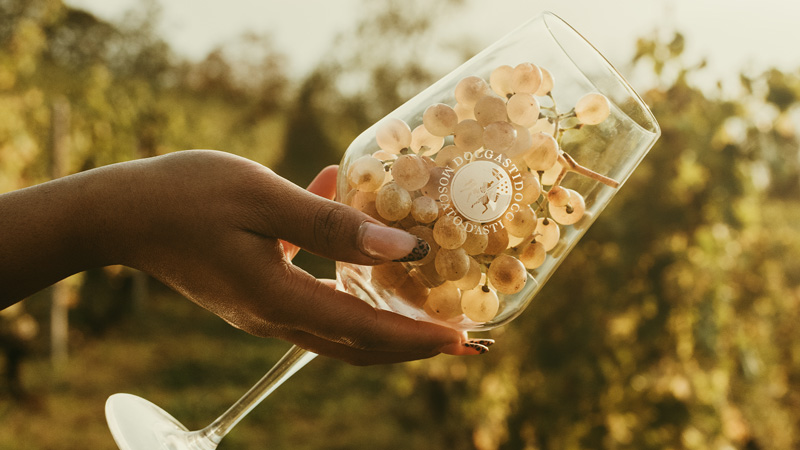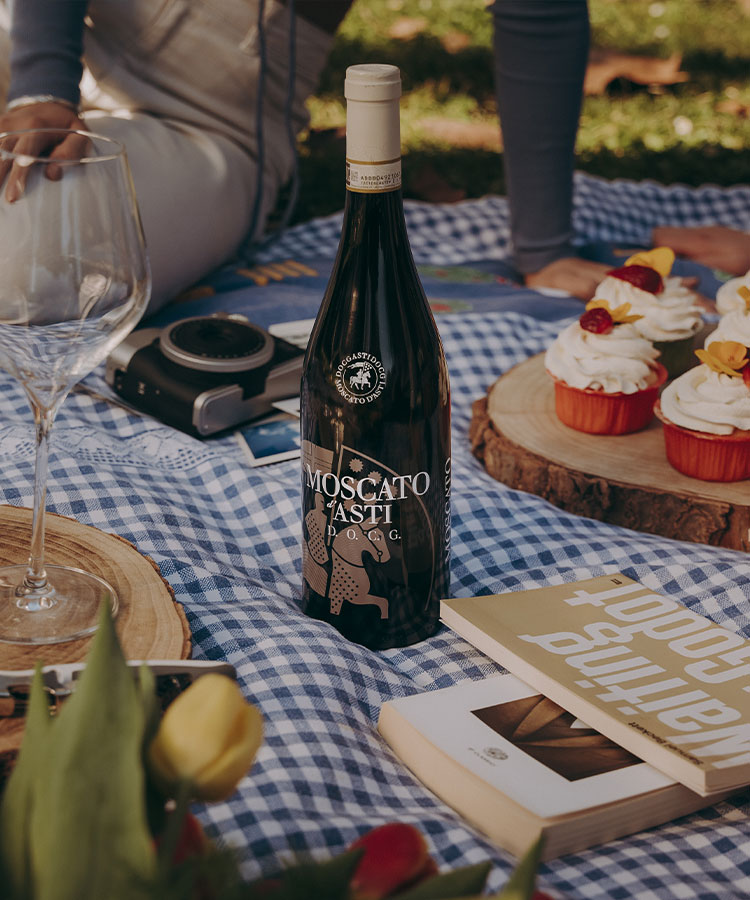
While every day is a good day to enjoy Moscato’s sweet, delicately fruity flavors, it’s practically a wine lover’s duty to celebrate this festive spring day with the floral fragrance and delicate bubbles of Moscato d’Asti DOCG. That’s right: May 9th is National Moscato Day.
Ready to make the most of this oh-so-special day? Here’s everything you need to know about this lightly effervescent Italian delight and its fizzier relative, Asti Spumante DOCG.
Ancient Grapes
Like its sister wine, Asti Spumante, Moscato d’Asti is made from Moscato Bianco grapes, considered some of the finest Muscat grapes in the world, while grapes in the Muscat family — most notably Muscat of Alexandria — make sweet, grapey wines such as passito, Moscato Bianco is the key ingredient in making Moscato d’Asti and Asti Spumante. These grapes are so sweet that no sugar is needed when making these wines; the natural flavor is enough. The grapes have a deeply musky — yet refined — fragrance that creates complex flavors of citrus, stone fruit, and spring blossoms when transformed into Moscato d’Asti and Asti Spumante.

Although Moscato Bianco likely originated in Ancient Greece, the grapes are grown all over the world, but it’s in the hills and valleys of northwestern Italy’s Piedmont region where these grapes realize their full potential. The Moscatos grown in this region are the only ones in Italy with a DOCG.
The Pride of Piedmont
Piedmont, nicknamed the Burgundy of Italy, has long been lauded for its Barbaresco and Barolo wines — lightly-hued yet full-bodied reds made from the region’s native Nebbiolo grape. This region in the foothills of the Alps has an ideal terroir, pulling out particularly desirable characteristics for winemaking.
Moscato d’Asti and Asti Spumante are produced in the three provinces of Asti, Alessandria, and Cuneo, all of which are part of the Vineyard Landscape of Piedmont: Langhe-Roero and Monferrato UNESCO World Heritage Site. Around 4,000 vineyards spread across nearly 250,000 acres are dedicated to Moscato Bianco plantings and around 100 million bottles of Moscato d’Asti and Asti Spumante are produced in any given year.
One Varietal, Two Elegant Expressions
As both wines trace their origins to the same grape from the same region, they naturally share some commonalities — but each is still very much distinct. Asti Spumante presents more like a traditional sparkling wine. It’s a true bubbly, which means it comes packaged with a mushroom-shaped cork to keep the pressure at bay.
Its aroma is fresh and floral, with notes of wisteria, acacia, and citrus flowers. It’s available in extra dry, dry, brut, and dolce formats. Asti Spumante can be made using the Metodo Classico, in the same way that Champagne is traditionally made, but it’s frequently produced using the Metodo Martinotti, or Charmat method, which is often — but not always — used to make Prosecco. The alcohol content ranges from around six to 11 percent ABV, lower than many other types of sparkling wine but higher than Moscato d’Asti.
One of Moscato d’Asti’s distinguishing — and enticing — features is that its developed alcohol content is relatively low, typically ranging from four-and-a-half to six percent ABV. And while it does have a bit of fizz, Moscato d’Asti is not actually a sparkling wine — it just gets its touch of effervescence through a partial fermentation in stainless-steel tanks, a process that’s halted when the alcohol levels reach a mere five percent. Because of this low level of pressure, Moscato d’Asti is packaged with a traditional cork or even a convenient screw cap. Like Asti Spumante, Moscato d’Asti evokes floral aromas of acacia and wisteria, but often with a bit spicier undertone. And while Asti Spumante runs sweeter than many other sparkling varieties, Moscato d’Asti is sweeter still, with a tickly tongue feel that gives it a bit of contrasting zeal.
Italy’s Most Drinkable Bubbly
When most people think of Italian sparkling wines, Prosecco is the first thing that comes to mind. Other notable sparkling wines include Trentodoc and Franciacorta — both drier wines produced using the traditional method — and Lambrusco, a sparkling red from Emilia-Romagna. While all these sparkling wines have their place, their alcohol content typically ranges from 8 to 12 percent, meaning most drinkers have to pace themselves when imbibing.

Conversely, most Moscato d’Asti has an alcohol level on par with beer, meaning it’s easy to have a few glasses in one session without worrying about crossing your limits. Its soft effervescence and fruit-forward notes make it an excellent wine for drinking on its own or pairing with contrastingly strong flavors, from blue cheese to rich, dark chocolatey desserts.
Getting On Board with Moscato d’Asti
If you don’t have a bottle of Moscato d’Asti at the ready in your cellar, fear not — you still have time to pick up a bottle of this coveted wine and get the party started. You won’t even have to jet off to Italy to do it (as tempting as that sounds). Moscato d’Asti and Asti Spumante are widely available in the U.S., both in fine wine shops and online. While you’re at it, head over to the Consorzio Asti DOCG website to learn more about Moscato d’Asti and Asti Spumante, or follow them on Instagram and Facebook.
This article is sponsored by Consorzio Asti DOCG.
